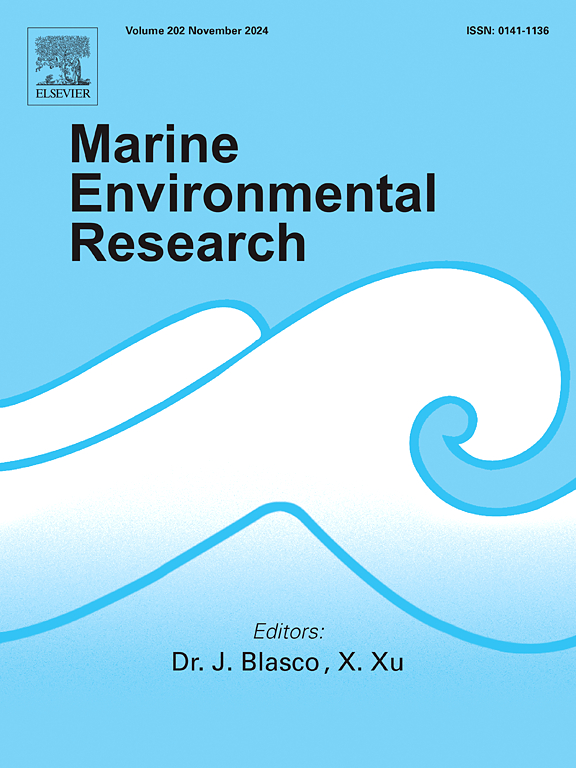Invasive blue vs. local Green: analysis of substrate preference of two crab species, Callinectes sapidus and Carcinus aestuarii
IF 3
3区 环境科学与生态学
Q2 ENVIRONMENTAL SCIENCES
引用次数: 0
Abstract
Introduced primarily via ballast waters, the Atlantic Blue Crab, Callinectes sapidus, has spread throughout the Mediterranean Sea exhibiting a highly invasive behaviour. In introduced ecosystems it is posing a threat to local species and economic activities. This study compares, for the first time, habitat preference of C. sapidus and the native green crab, the Mediterranean Shore Crab Carcinus aestuarii, in the Venice Lagoon. Sediment samples from natural sandy bottoms, as well as from natural and artificial saltmarshes were used to assess substrate preference (time spent on each substrate) of both species under controlled laboratory conditions. Sediment composition was characterized by granulometric analysis, to assess differences in the sediment structure of the samples. Behavioural observations indicated that C. sapidus exhibits a preference for substrates with larger grain size, that characterized both natural bottoms and artificial saltmarshes, whereas C. aestuarii showed no specific substrate preference. Moreover, C. sapidus demonstrated significantly higher burrowing activity, likely due to its adaptation to sandy environments and burrowing behaviour as a predation avoidance strategy. Hydro-morphological alterations driven by both human-driven erosion and by restoration actions are increasing the sandy component of the Venice lagoon sediments across habitats. As a result, the blue crab may potentially thrive in wider areas. Our findings have implications for conservation and management, as the expansion of C. sapidus could further threaten C. aestuarii populations through competition and predation, exacerbating the decline of local artisanal fisheries.
求助全文
约1分钟内获得全文
求助全文
来源期刊

Marine environmental research
环境科学-毒理学
CiteScore
5.90
自引率
3.00%
发文量
217
审稿时长
46 days
期刊介绍:
Marine Environmental Research publishes original research papers on chemical, physical, and biological interactions in the oceans and coastal waters. The journal serves as a forum for new information on biology, chemistry, and toxicology and syntheses that advance understanding of marine environmental processes.
Submission of multidisciplinary studies is encouraged. Studies that utilize experimental approaches to clarify the roles of anthropogenic and natural causes of changes in marine ecosystems are especially welcome, as are those studies that represent new developments of a theoretical or conceptual aspect of marine science. All papers published in this journal are reviewed by qualified peers prior to acceptance and publication. Examples of topics considered to be appropriate for the journal include, but are not limited to, the following:
– The extent, persistence, and consequences of change and the recovery from such change in natural marine systems
– The biochemical, physiological, and ecological consequences of contaminants to marine organisms and ecosystems
– The biogeochemistry of naturally occurring and anthropogenic substances
– Models that describe and predict the above processes
– Monitoring studies, to the extent that their results provide new information on functional processes
– Methodological papers describing improved quantitative techniques for the marine sciences.
 求助内容:
求助内容: 应助结果提醒方式:
应助结果提醒方式:


